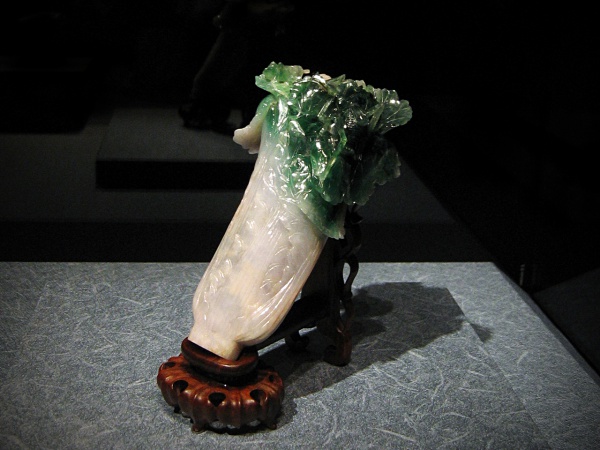Facts About The Jadeite Cabbage
The Jadeite Cabbage, often referred to as the Jadeite Cabbage with Insects, is a magnificent jadeite sculpture resembling a Chinese cabbage head, complete with a locust and a Chinese bush cricket nestling among its leaves. This exquisite masterpiece is housed at the National Palace Museum in Taipei, Taiwan. Despite its immense popularity among museum visitors and the common misconception that it is a national treasure, it is officially designated as a significant antiquity. This classification is due to the fact that its rarity and value do not meet the stringent criteria for a national treasure as outlined by the Cultural Heritage Preservation Act.
This exceptional artifact measures 18.7 by 9.1 centimeters and has a thickness of 5.07 centimeters. It is intricately carved from a single piece of jadeite that is both white and green. The artist ingeniously utilized the natural imperfections of the jadeite, such as cracks and color variations, to replicate the veins in the cabbage’s stalks and leaves, resulting in an extraordinarily lifelike appearance. Originally believed to symbolize female virtue and fertility, further study clarified that the insect depicted is actually a Chinese bush cricket, not a katydid, and that it does not carry the fertility symbolism previously attributed to it.
The Jadeite Cabbage boasts a rich history. Dating back to 1889, it was exhibited in the Forbidden City's Yonghe Palace, likely as part of a wedding dowry. It endured numerous historical upheavals, including the Second Sino-Japanese War and the Chinese Civil War, before eventually finding a permanent home at the National Palace Museum in Taiwan.
